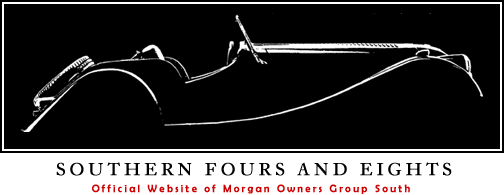Month: August 2018
-
Stacey Schepens – MOGSouth Registrar and Treasurer – Address Change
—
by
Stacey Schepens, the MOGSouth Registrar and Treasurer has changed addresses. If you have business with the MOGSouth Registrar or Treasurer use this new address for Stacey. Stacey Schepens 2426 Monta Vista Way Hoschton, GA 30548
-
WHITWHAT? THE WHITWORTH SYSTEM (Moss Motors)
[It happens to me all the time. The wrench won’t fit, it’s too small, so I get the next larger one and it won’t fit either, it’s too large. Nothing in between? What now, darn, it’s probably ‘Whitworth’. If you play with old British cars, you have most likely run into this situation. An interesting…
-
Morgan Aero GT: The Most Hardcore Aero Ever – Carfection (4K)
[I am not a Aero type but this is pretty! Enjoy, Mark]
-
Driving Innovation with Classically Inspired British Cars – Aug 2018 (https://www.telegraph.co.uk/)
As one of the world’s oldest makers of sports cars, Morgan Motor Company has found unique ways to stay ahead It’s easy to spot a Morgan car in a line-up. The iconic vintage silhouette has nostalgic appeal, even if you aren’t especially motor-mad. In a booming, increasingly tech-driven industry, these cars still speak to their…
-
New (?) MOGSouth Supporter – Melvyn Rutter !!
Melvyn Rutter is back!! Melvyn Rutter (and his business) have always been big supporters of MOGSouth. Unfortunately, when our Newsletter died so did their advertisement. Now Melvyn is back with a new advertisement on our website! Melvyn’s advertisement provides a direct link to their main business website as well as a link to their extensive…
-
Morgan’s Thrill On The Hill – 2018 Report from the Field
—
by
[Ken and Pat Kreuzer are visiting the UK and attended the 2018 Morgan Motor Company’s Thrill on the Hill. They have also rented a more modern Plus 4 for their adventure. Here are a few words on the event and be sure to view the great pictures from their MMC Factory visit and the from…
-
Final Details – 2018 MOGSouth Fall Meet, Augusta GA, 14 – 16 Sep.
FIRST THINGS FIRST – Dorothy Needs to Know the following information for the Hotel, the Restaurant, the Hospitality Suite, etc. Please send her an email to moore_dorothy@bellsouth.net or call 678-513-2931, (c) 404-678-4236. DO THIS NOW !!! NAME:______________________________________________________ __(Check Mark for Yes) Staying at The Partridge Inn, 2110 Walton Way, Augusta GA 30904 – 706-737-8888 __(Check Mark…
-
The Story of ‘Dolly’ – the first prototype for Morgan’s Plus 8 (Hemmings on line – 7 Aug 2018)
Photography by Troy Ziel, John H. Sheally, Bob Dunmore, and Patrick Brinton; courtesy of Tcherek Kamstra and Morgan Cars USA. Hemmings Editor’s note: We’re pleased to be able to share the story of “Dolly,” the first prototype for Morgan’s Plus 8, a model devised a half-century ago that debuted at the 1968 Earls Court Motor…
